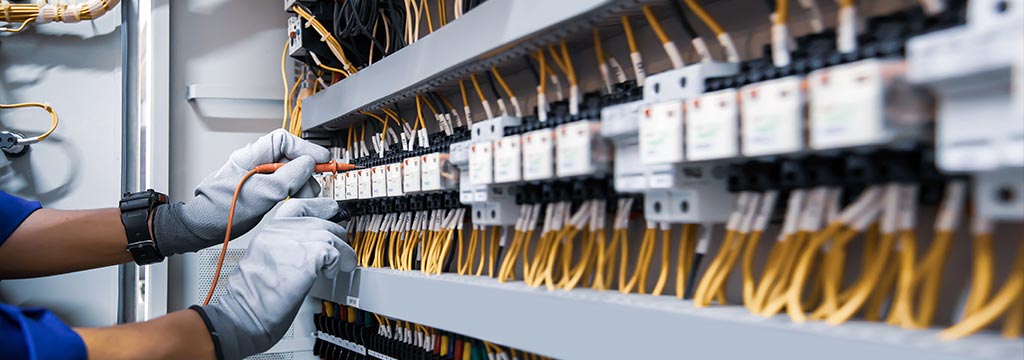In today’s fast-paced world of technology-driven businesses, you’ve likely heard the terms “help desk” and “IT support” used interchangeably.
However, despite their similarities, these two functions serve unique purposes, each crucial in its own way. Recognising these differences is critical to getting the most out of an organisation setup.
This article will explore IT support vs. help desk services in detail, uncovering what sets them apart, why they matter, and how they work together to ensure your business’s success.
What is IT support?
IT support is an indispensable service that guarantees the easy and secure functioning of the technology infrastructure within the organisation. As your backbone carries the human body’s weight, IT support holds up businesses to function efficiently.
IT support professionals perform tasks such as technical problem-solving, issue detection, and advanced security solutions to secure digital assets.
They also ensure the optimisation of your hardware and software resources for top performance and the seamless implementation of emerging technologies.
Our team of skilled experts will help you to create an IT support scheme that fits your unique requirements and budget.
What is the help desk?
As for user support, a help desk is the first line of defence in resolving technical problems and service requests that connect users with IT.
It troubleshoots and provides a wide range of services, ensuring smooth operations for the user through handholding and maintaining an all-inclusive knowledge base.
Good help desk management, in turn, determines customer satisfaction, directly linking timely resolution of issues with performance loyalty.
Internal help desks improve internal communication between employees, reducing interruptions and facilitating the quick resolution of operational challenges.
With the help of customer interaction, they can gain valuable information because their support is twenty-four hours.
Through this data-based method, organisations recognise repeating issues, make educated decisions, and stay proactive to prevent similar incidents from occurring again.
Standardised and proactive monitoring ensures help desks deliver uniform results that follow the necessary level of accuracy.
With their quick fixes to tech bugs and instructions, help desks help employees perform better by enabling them to work efficiently.
Learn about the transformative power of a properly controlled user support help desk in our blog article.
What are the differences between IT support and help desk services?
Although the words are commonly used one for another, there is a slight difference between IT support and help desk.
The scope of IT support is broader and includes in-depth technical skills and preventive work.
While the help desk is mainly dealing with day-to-day user questions and solving troubleshooting, it acts as a first point of contact to resolve common technical issues:
You may also be interested in IT Support vs Data Analyst
IT support services

- Help Desk support: When you need help, the Help Desk is there to assist. They answer your questions, fix issues, and can even lend a hand from afar, all from their user-friendly support centre.
- Network management: Think of Network Management as the guardian of your internet world. They make sure your network runs smoothly, keeps you connected, and stands strong against online threats, like your trusty digital protector.
- Cybersecurity solutions: These are your digital superheroes. They set up protective shields like firewalls and watch out for sneaky cyber villains like malware. Your IT support team always works behind the scenes to keep your systems safe.
- Hardware and software maintenance: Imagine them as tech doctors. They ensure all your computer parts are in great shape and keep everything up-to-date, secure, and running smoothly, just like a well-oiled machine.
- Cloud services: Cloud technology might seem like a puzzle, but your IT support is here to solve it. Whether you’re moving to the cloud, keeping your cloud systems in check, or making them work better, they have the expertise to guide you through it all.
Help desk services

- Technical Support: Think of the help desk as your go-to tech expert. They’re here to help customers and employees with anything tech-related, whether a software hiccough or a hardware headache. They’ll troubleshoot and guide you through solutions with a friendly smile.
- Issue Tracking: Help desks use nifty ticketing systems to monitor customer questions and problems. This way, nothing gets lost in the shuffle, and every issue is handled like a pro, step by step.
- Knowledge Base: Imagine a treasure trove of answers, how-tos, and FAQs—all in one place. The help desk team updates this treasure chest so you can find solutions, making tech life a breeze.
- User Training: The help desk offers training sessions to users, like your personal tech boot camp. They’ll teach you the ins and outs of software, tools, and systems so you can use them like a pro and avoid any tech hiccoughs.
- Remote Assistance: Even if you’re miles apart, help desk agents can magically dive into your device and fix issues. It’s like having a tech wizard at your service, no matter where you are.
IT support and help desk services critical differences
This section will explain the differences between IT support and help desk from different perspectives.
IT support vs. help desk: Scope of services
IT support provides the foundation for effective technology management, while the help desk is designed to facilitate problem resolution.
By integrating IT support’s proactive attitude with immediate help desk intervention, organisations can establish a solid technology infrastructure that enhances efficiencies and user satisfaction.
IT support vs. help desk: Engagement with users
Help desks can be visualised as frontline health personnel. In other words, the help desk focuses on immediate user needs, while IT support takes a broader dimension, ensuring the overall well-being of the technology infrastructure.
Both teams collaborate to create a balanced tech culture that ensures continuous employee empowerment for greater productivity.
Being proactive vs. reactive
IT support is concerned with prevention, whereas the help desk aims to address issues as they come up.
Combined, these teams form a well-rounded approach to tech support with an effective technology infrastructure that enables organisations to succeed.
Looking inside vs. outside
IT support oversees the organisation’s IT infrastructure holistically, while the help desk caters to the specific needs of end-users.
Together, these teams form a cohesive unit that safeguards the organisation’s technology ecosystem and provides exceptional user experience.
IT support vs. help desk: Expertise and complexity
Help desk agents handle daily user issues with broad-based technical knowledge, while IT support professionals address complex technical challenges with specialised expertise.
Together, these teams form a cohesive unit that provides comprehensive IT support, safeguards the organisation’s technology ecosystem, and enables smooth operations.
Collaboration and overlap between IT support and help desk
Although IT support and the help desk have unique roles, they frequently cooperate to ensure comprehensive technology management. Here’s how they collaborate:
- Issue escalation: If the help desk encounters a complex issue that requires specialised knowledge, they can escalate it to the IT support team for further investigation and resolution.
- Preventive measures: IT support proactively implements measures to reduce the frequency of user issues, thus lessening the burden on the help desk and enhancing the user experience.
- Data sharing: Valuable insights gained from the help desk, such as recurring user concerns, inform IT support’s decision-making, enabling them to address common problems proactively.
- Infrastructure maintenance: IT support ensures the health and stability of the technology infrastructure, directly influencing the help desk’s ability to provide efficient solutions.
Conclusion
In the complex world of technology-driven businesses, grasping the distinctions and advantages of the help desk and IT support is paramount.
These two distinct yet interconnected pillars are vital for maintaining operational excellence and ensuring user satisfaction.
IT support oversees the organisation’s entire technology ecosystem, focusing on its efficiency, security, and scalability. On the other hand, the help desk serves as the frontline of user support, swiftly addressing immediate concerns and guiding users to solutions.
While the help desk ensures immediate user support and satisfaction, IT support manages the broader technology landscape, implementing proactive strategies and solutions.
When these two entities collaborate, they create a harmonious partnership that drives operational efficiency, enhances user satisfaction, and fosters technological excellence.
By comprehending their unique roles and working together, businesses can harness their combined strength to achieve success, maintain operational continuity, and deliver exceptional user experiences in our technology-driven world.
If you are searching for an IT service provider who can assist your company in realising these goals, contact TechVertu for help.

Lets Talk!
If you have additional comments or questions about this article, you can share them in this section.